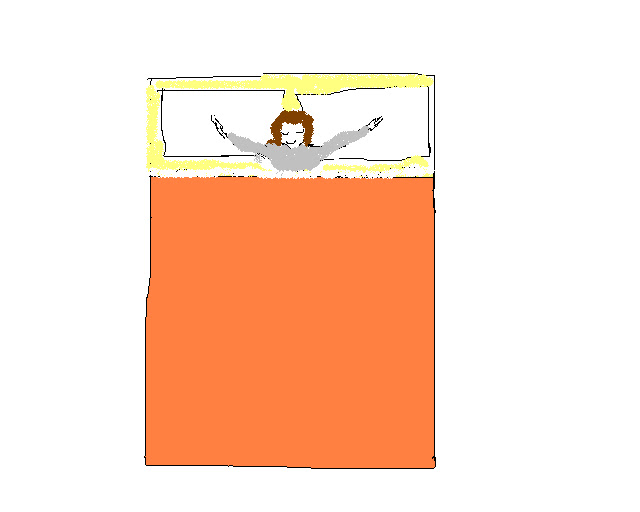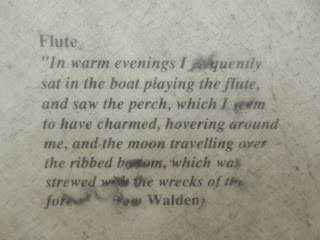(1) a frightened, tight-lipped bald guy submerged in water, trying to remember how to keep afloat?
(2) a camel-faced animal, quietly swimming by in a pond, smiling?.
(3) the remains of someone's uneaten lunch (burnt pita-bread sandwich that got smooshed)?
Or is it:
or is it:
(5) a discarded scary Halloween mask hanging on a nail in the closet.
Actually, it's a block of gray clay, worked over first like bread dough, then punched into some random shape and placed under a tiny bright lamp in a darkened room. Our job, as beginning art students, was to draw its lines and shadows. It was the first time I had ever used a charcoal stick (so there were lots of smudges). (Did I mention we were timed?)
It wasn't ever intended to "be" anything, except a sketchy rendition of something observed.
The interpretations come later.
My final drawing looks nothing like the original clay blob, because I'd begun playing with "shadowing". And somewhere during the process of "Draw what you see", I began seeing more than just lines and shadows and angles - I saw what looked like a kind of mask. I looked again and saw a nervous guy submerged in water, or a goofy animal in a pond.
Response to any work of art is subjective (justso with poetry and fiction). Not everybody is talented or skilled at the crafting of it. Sometimes all you want to hear (in the way of feedback) from someone, is "Did you like it or not? Did it say anything to you?" (or, if there was an intentional message the artist/writer wanted to convey--"Did you 'get' it?") But instead, sometimes it gets analyzed to death, "It's too detailed, it looks unfinished, it's clearly been influenced by the X-school, it's not up to the your usual standard, it's too dark a subject, it's too vague, it's "cute", or--what they say when they don't want to tell you it sucks (because they don't want to hurt your feelings)--"it's .... interesting." ha ha
This is not "art", it's just a timed, beginning-level,class assignment.But it's good practice in training one to be more observant of a thing's nuances and delightful possibilities..
I see now why sometimes what you start out to create, with a very clear idea of what you intend, it suddenly starts turning into something totally else. I find this happens equally in making art, writing poems or stories or non-fiction or in organizing some project It's like something grabs your attention during the creative (or putting together) process, a kind of voiceless voice that seems to whisper, "Hey, why don't you do this, instead of that?" or "Why not change the focus?" or "Damn, this isn't working. Let's rethink the whole arrangement". And you begin looking at the thing in a completely different way and realize: "Eureka! That's IT!"
So, vis-a-vis the art class, the "how to" part is important, and the practice essential.You have to pay attention. It's hard work. (So much erasing, messing up, starting over!) But it starts getting more interesting the more you get into it.. You start "seeing" more possibilities. It gets to be more fun.. You become addicted.
I'm calling this image "Clay Blob I, II and II" ( the same drawing, seen from three different viewing positions).
I almost didn't take this course (Art for Beginners) initially, because it meets at night and if you're a morning person, it means you have to rush through or skip dinner, and you get hungry, tired and risk dozing off when you should be alert and focused. Inner rhythm and all that. So I'm not continuing beyond Spring and will just have to rely on "How To..." books from the library and YouTube videos to get more specialized training. Visiting artists' blogs, seeing what others are creating, and talking with artists helps enormously. You get all sorts of wonderful advice ("They'll never tell you this in class but here's a hint about how to ..." etc.). Invaluable!
Anyway, so that's my art assignment for last week. Only two more sessions and then we're on our own, so to speak. But it's got me completely hooked,. Ask me how many hours I could spend in the local art store now, looking at brushes and pens and sketchbooks and tubed oil paints and watercolor kits and charcoal pencils and ink and ......


















